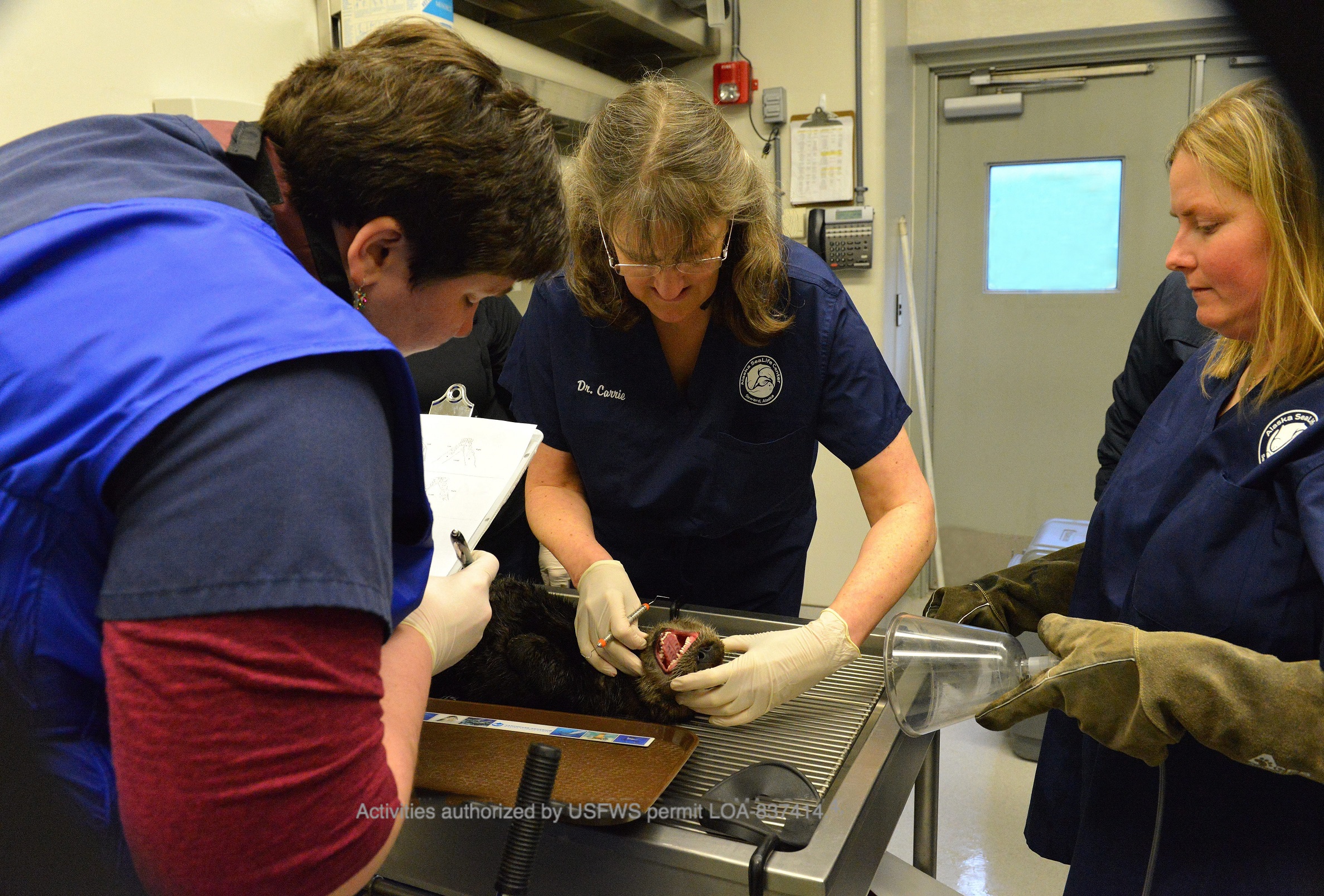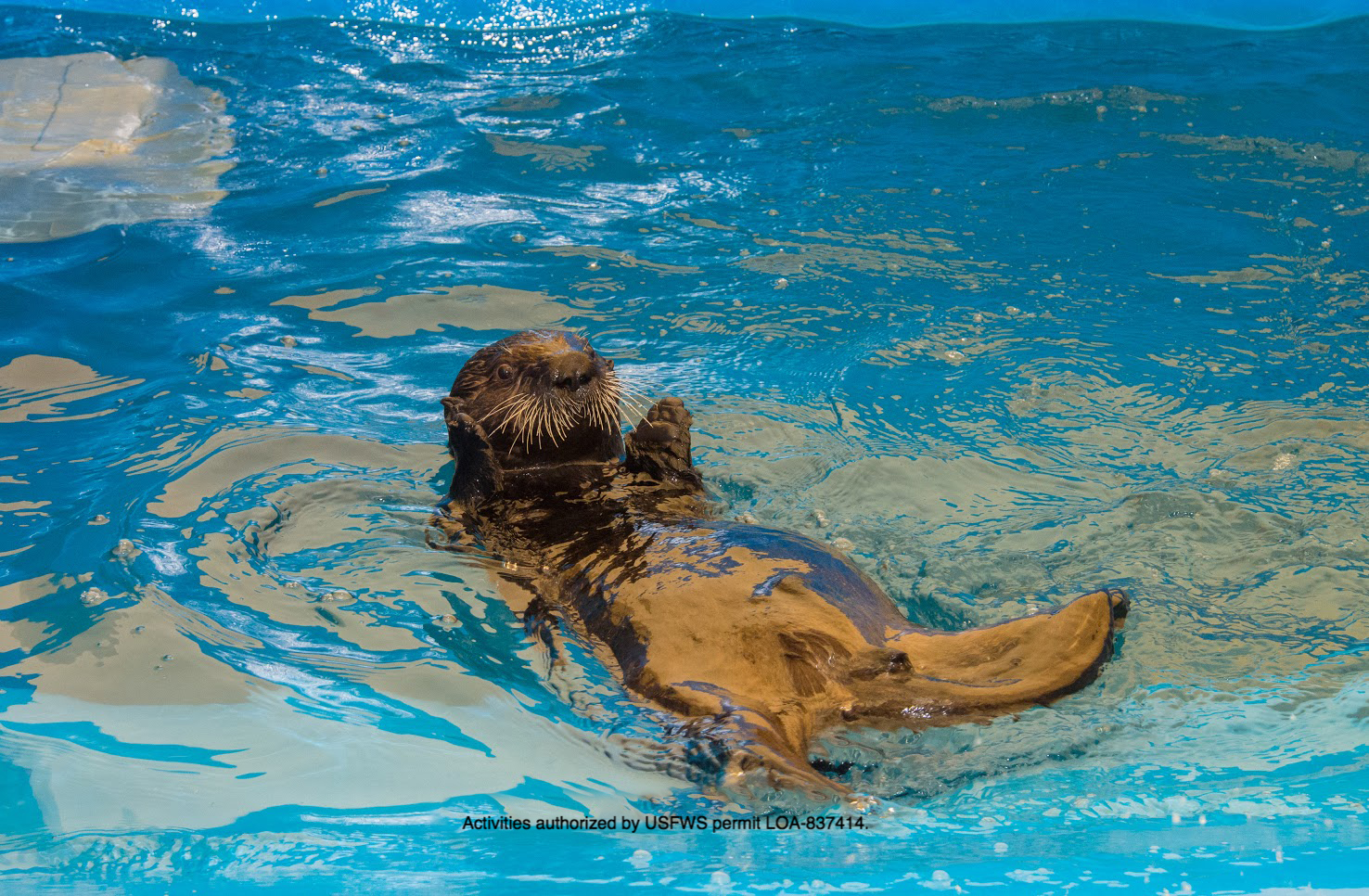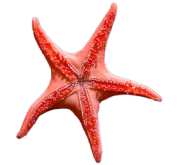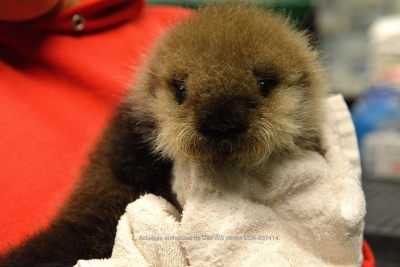Sea Otter Pups From Kachemak Bay and Cordova Latest in Record Breaking Trend March 15, 2016
Veterinarians at ASLC express concern heading into 2016 stranding season
Seward, Alaska (March 14, 2016) - Veterinarians at the Alaska SeaLife Center (ASLC) say there is every indication that 2016 will be another record year for their Wildlife Response Program following admission of two sea otter pups in the past month.
Already this year the non-profit organization, which is the only permitted marine mammal wildlife rehabilitation entity in Alaska, has recorded 80 reports alone involving otters, and that is before the summer stranding season has even begun. That number compares with a total 300 otters reported to the Center in 2015, 116 of which became cases the Center was directly involved in, peaking last September at a rate 16 times higher than for the same period in 2014.
Otter EL1620 was received into the Center from Cordova on March 7, following on the heels of otter EL1616, a pup stranded in the Kachemak Bay area. While sea otter EL1620 was observed to be a healthy size and weight, its stranding location and other factors raised concerns for the ASLC Wildlife Response Team who ultimately determined to admit EL1620. Pup EL1616 was observed in waters off Homer, appearing malnourished with other signs of stranding and an imminent threat of killer whales surrounding the pup.
Sea otters under six months require 24-hour watch. Typically ASLC staff expect to be on 24/7 duty during the summer stranding season; however, over the past ten month period the ASLC Wildlife Response Team has been on the mandatory 24-hour watch continuously with the exception of 21 days.
According to ASLC veterinarian Carrie Goertz, there is a general increase across all causes of otter deaths and there are some indications that something new may be exacerbating the situation.
“It’s hard to say how much impact the uptick in algal blooms or the El Nino pattern is having,” says Goertz. “However, the feeling is that it must be having some impact which is distressing since both are expected to continue this year.”
Currently the ASLC has six sea otters in residence. With the beginning of the stranding season later this spring, staff fully anticipates the trend to continue.
The Alaska SeaLife Center is the only permanent marine rehabilitation center in Alaska, responding to wildlife such as seals, walrus and sea otters. The Center’s Wildlife Response Program responds to sea otters with the authorization of U.S. Fish and Wildlife Service. Once a sea otter is admitted to the Center, it is closely monitored by the veterinary and animal care staff at ASLC.
Alaska SeaLife Center President and CEO Tara Riemer explained, “We have no federal or state funding to care for sea otters, and we rely on donations to keep this program going. We especially thank individual Alaskans all around the state as well as Shell Exploration and Production and ConocoPhillips Alaska for their generous contributions to the Center in support of wildlife rescue and oil spill response readiness.”
The Alaska SeaLife Center operates a 24-hour hotline for the public to report stranded marine mammals or birds, and encourages people who have found a stranded or sick marine animal to avoid touching or approaching the animal. Call first! 1-888-774-SEAL.


About the ASLC
Opened in 1998, the Alaska SeaLife Center operates as a private, non-profit research institution and public aquarium. It generates and shares scientific knowledge to promote understanding and stewardship of Alaska’s marine ecosystems. The ASLC is an accredited member of the Association of Zoos and Aquariums. To learn more, visit www.alaskasealife.org.
High resolution photos and full story available from media@alaskasealife.org; 907-224-6397.


